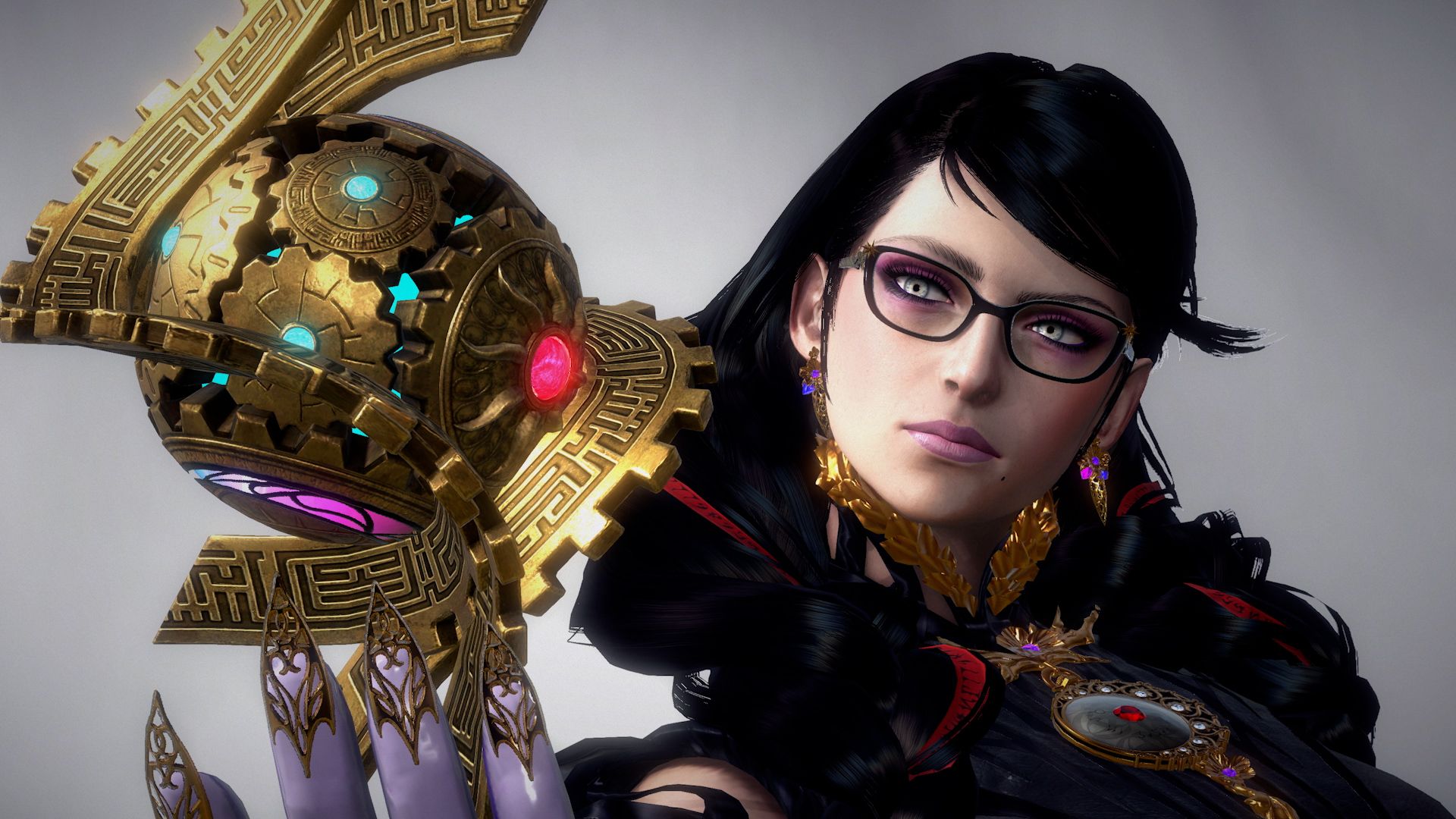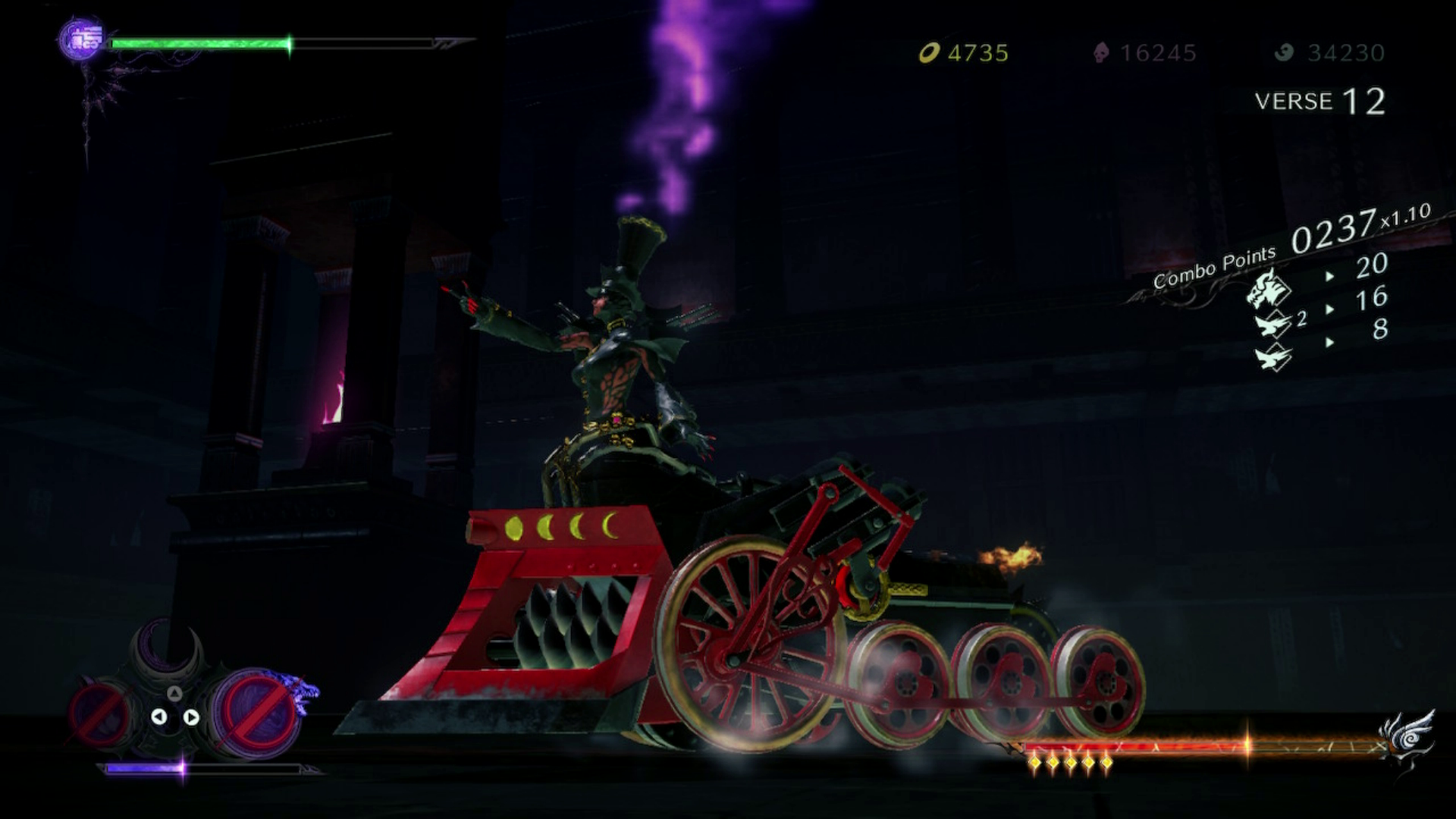Bayonetta 3 doesn’t change any of that; indeed it’s as bombastic, overstated and over-the-top as this series has ever been, and by extension perhaps the most outrageous thing PlatinumGames has produced yet. It’s also, though, perhaps its most unrefined, because for all its considerable charms Bayonetta 3 is a mess. A charming, frequently dazzling mess, but a mess all the same. Maybe that’s inevitable in a sequel that throws everything it can at the player, piling on one idea after the other until the whole thing buckles. There’s a story here, but I’m not going to try and make too much sense of it (if you have been keeping up with the Bayonettas, though, you’ll be rewarded with face-offs with old favourites and a whole host of cameos I won’t spoil here, not least because some incredibly restrictive review guidelines prevent me from doing so). What’s important is that there’s a multiverse under threat, meaning there are multiple worlds to save and meaning that there’s no shortage of new surroundings to tear apart in a series of spectacular setpieces. Once more there are restrictive guidelines stopping me from telling you the real highlights, though that’s probably for the best to ensure the sense of surprise is kept intact, so I’ll keep it to broad strokes; there are rooftop chases across the rapidly deforming skyscrapers of Tokyo, shootouts that take place atop skittering demon spiders and kaiju fights that introduce a new level of scale and spectacle to Bayonetta. Given the amount Bayonetta 3 fits into its dozen hours of action I could go on indefinitely, but the best way to describe it is indescribable; these are setpieces to be savoured first-hand and that have to be seen to be believed. Beyond those frequent setpieces the fundamentals have been tweaked far more drastically for Bayonetta 3 than they did between the first two games. The most profound change is the ability to directly control the demons Bayonetta has traditionally been able to call upon in battle, the introduction of Demon Slaves playing to that increased sense of scale and spectacle that’s the thrust of Bayonetta 3. In terms of ramping up the ridiculousness of the action, the Demon Slaves are an absolute triumph; there’s the towering Madama Butterfly whose fists are the size of Bayonetta herself, or the fearsome Gomorrah, a 30-foot-tall dragon who fills the screen and makes it shake with fury upon being summoned. They’re outrageous, though none of them more so than Wartrain Gouon who’s not so much a demon and more of a full-sized steam train that can be called upon. An Infernal Demon tied to all-new weapon the Dead End Express, Wartrain Gouon is perhaps Bayonetta at its most ridiculous and therefore its most sublime, as you clobber enemies with a hefty locomotive engine before transforming into a train and quite literally steaming into mobs. This is Bayonetta: Choo Choo edition, a premise as delirious as it is delightful to play. And is that a Legend of Zelda: Spirit Tracks reference as Wartrain Gouon is summoned for some light puzzle solving, as the Demon Slaves repeatedly are in some of the Zelda-lite dungeons that you explore in Bayonetta 3’s campaign? As ever in a series that’s disarmingly literate when it comes to the world of videogames there’s a litany of nods and references, from chase sequences that ape Star Fox and Panzer Dragoon to fully-fledged side-scrolling levels that emulate arcade classic Elevator Action (I’m sure I spotted a shout-out to obscure Dreamcast launch title Pen Pen Trilcelon, though maybe I’m just losing my mind). It’s this breathlessness that makes Bayonetta 3 such a blast. That breathlessness can come across as straight-up wheeziness in parts, though. Controlled chaos has always been Bayonetta’s calling card, but Bayonetta 3 frequently loses a handle on the action; when playing as Bayonetta the camera’s more distant than in previous games to help accommodate the Demon Slaves that are a foundational part of her new arsenal, but the result is combat that’s often illegible. Press a button and the screen explodes, as is the series’ credo: in Bayonetta 3, though, it can be too easy to lose sight of yourself in all that colourful noise. Bayonetta 3’s more than just noisy, though. Too often it’s a downright mess. It’s tempting to put some blame on the ageing hardware PlatinumGames is tied to, and the ambition here certainly isn’t helped by technical limitations of a device that wasn’t exactly blessed with processing power when it first came out some five years ago, but just as often it seems to be undone by fuzzy implementation and murky visual design. Sometimes, just as criminally for a series defined by its effervescent fizz, it falls flat. Take new addition to the cast Viola, a katana-wielding witch-in-training who fights alongside a cat big enough to earn a place in the Macy’s Parade, and who offers a stripped-back moveset which presents an interesting counterpoint to the heady excess of Bayonetta’s sequences. Which would all be well and good, if Viola wasn’t such an under-written, under-designed absence of a character, her wardrobe of leather jacket and tartan trousers melange of second-hand offcuts and her second-hand punky attitude delivered in half-arsed quips. Viola feels like she’s been beamed in from another, lesser series, and never really fits in Bayonetta’s fantastical world. Being in close proximity to Bayonetta, as close to video game royalty as it gets, was always going to be a challenge, but the mediocrity of Viola extends out to some underwhelming passages of play full of clumsy platforming and fuzzy puzzling in environments that look distinctly second-rate. It undermines a recurring feeling that Bayonetta 3 might simply be attempting too much, a notion underlined by the existence of three separate currencies in Bayonetta 3, with one for items, one for unlockable cosmetics and another that powers the skill tree that lets you unlock new abilities. Or skill trees, even, for everyone gets one in a web of menus that’s hardly elegant. It’s that elegance that’s missing most in Bayonetta 3, and the sense of overriding style that’s held the series together in the past is often in danger of coming apart at the seams with so much going on. If Bayonetta 2 was a refinement of what’s gone before, then Bayonetta 3 feels like an uncontrolled explosion, the resulting action attention grabbing but jagged and incoherent. What a mess it is, though. Bayonetta 3 might not be as consistently brilliant as its predecessors, but when it’s good it’s next to godly; playing as Bayonetta with her entire suite of toys unlocked is as electrifying as it’s ever been, a spectacle of sinewy combat and S&M excess that’s uniquely, defiantly video games. It’s so over-the-top that trying to make sense of it would be a mistake, and while the rough edges are a disappointment if you embrace the chaos there’s a lot to love here. Bayonetta 3 is overstated, in parts underbaked - but it’s rarely less than a thrill.



